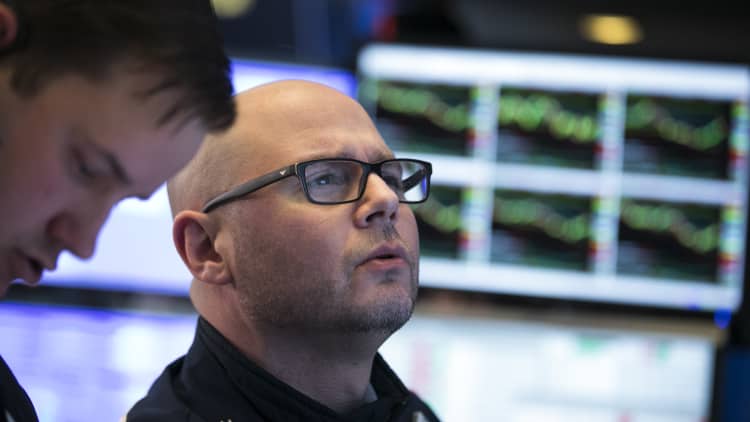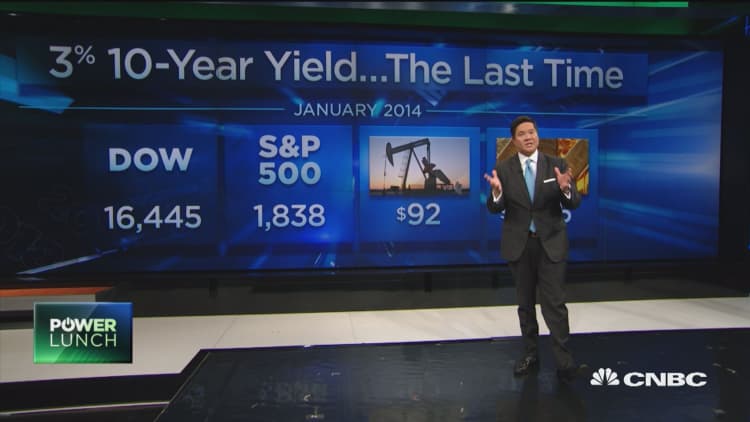
The yield on the benchmark 10-year Treasury note started the week on a tear, jumping to 2.99 percent and toying with the key 3 percent level that could trigger a reaction across global financial markets.
The 10-year yield was at 2.973 percent at 4:00 p.m. ET, after hitting 2.998 percent earlier Monday, its highest level since January 2014. The yield on the 30-year Treasury bond was higher at 3.143 percent. Yields move inversely to bond prices.
The benchmark for mortgage rates and other financial instruments has jumped in April on signs of increasing inflation and as the Federal Reserve signaled more rate increases are to come this year.
"I think that the move higher in 10-year yields is certainly the result of easing of geopolitical events and possible trade tensions relaxing," said Craig Bishop, vice president of U.S. fixed income at RBC Wealth Management. "Oil's made a nice run as well … it plays into concerns of higher inflation as well as a more aggressive Fed."
Bishop, who believes the Fed will only hike rates two more times this year, said that the central bank will likely be closely following the first reading of first-quarter GDP on Friday. First-quarter economic activity increased by 2 percent, according to CNBC's Rapid Update. Investors are concerned inflation is rising, but without an accompanying increase in the pace of economic growth.
Earlier in April, however, the Fed released the minutes from its March meeting stating that "all participants" expected a strengthening economy and rising inflation in coming months. Also this month, prices for everything from oil to wheat have jumped, sparking concerns inflation may be running hotter than investors would like.
The Fed's next meeting is May 2.
The Fed funds futures market gave almost a 50 percent probability that the central bank would move one more time in December as of Monday morning. The CME's FedWatch tool, a reliable gauge for the Federal Open Market Committee's actions, assigned a 48.2 percent
On Friday, the yield on the 10-year Treasury note hit 2.96 percent, its highest level since January 2014, while the two-year yield hit its highest level since September 2008.
The approach to 3 percent could weigh on global stock markets. When the yield climbed above 2.9 percent in February, concerns about rising borrowing costs helped trigger a correction for the S&P 500.
Still, some investors may welcome the move, coming as the Fed unwinds its giant balance sheet built up during the financial crisis.
Treasurys
U.S. sales of existing homes increased 1.1 percent on a monthly basis in March, suggesting that buyers aren't fazed by dwindling numbers of properties available.
The National Association of Realtors says that homes sold last month at a seasonally adjusted annual pace of 5.60 million, up from 5.54 million in February.
Geopolitics were front and center. On Saturday, North Korea pledged to halt nuclear and missile tests, adding that it would abandon its nuclear test site, in order to pursue peace and economic growth instead. President Donald Trump tweeted on Sunday, however, that the North Korean nuclear crisis was far from resolved.
French President Emmanuel Macron began his state visit to the U.S. this week and is set to meet with Trump.
WATCH: US 10-year at 3% then and now


